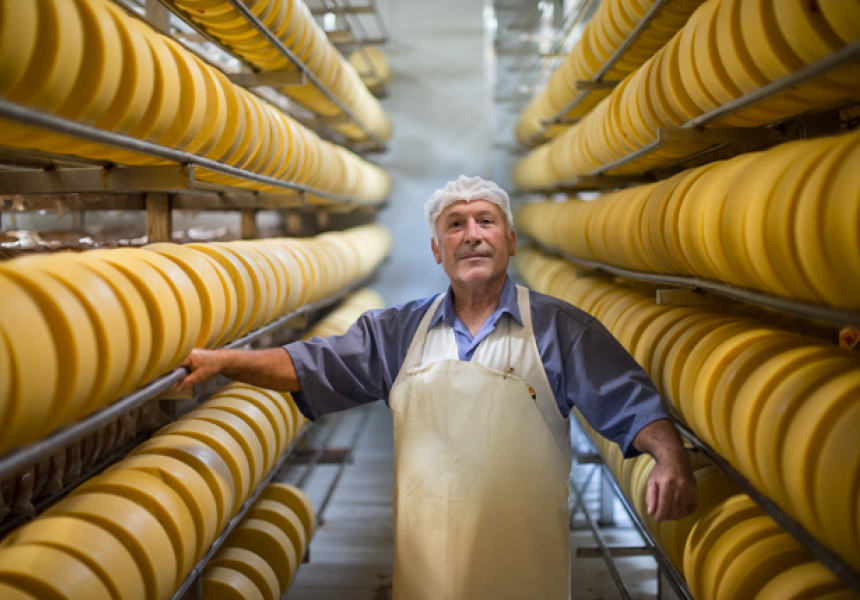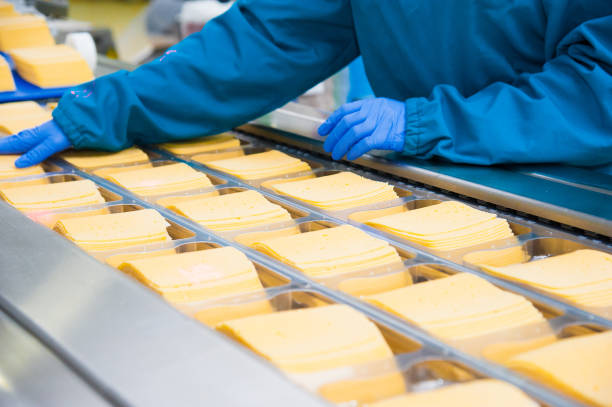Order Cheese for Sale Online Melbourne's Trusted Cheese Makers
Order Cheese for Sale Online Melbourne's Trusted Cheese Makers
Blog Article
Understanding the Science Behind Cheese Production: From Milk Selection to Last Item
The complex procedure of cheese manufacturing starts with the careful option of milk, a choice that greatly affects the last product's taste and appearance. Comprehending the pivotal function of bacteria in fermentation discloses how these bacteria change lactose right into lactic acid, an essential active ingredient in establishing celebrity's character. Following this, the coagulation process transforms liquid milk right into curds, establishing the stage for aging, where the real complexity of tastes arises. Quality control remains crucial at every phase, yet the subtleties of these processes might still hold shocks that merit additional expedition.
Milk Choice Process
The choice of milk is an essential step in the cheese production procedure, as it directly influences the taste, appearance, and quality of the end product. Numerous factors need to be considered throughout this selection, including the source of the milk, the type of the animals, and their diet. Cow's milk, goat's milk, and lamb's milk each have distinctive residential properties that contribute to the distinct attributes of different cheese selections.

In addition, the dietary web content of the milk, influenced by the animal's diet plan, can change celebrity's final attributes. Top quality milk, sourced from healthy and balanced animals, guarantees a premium cheese item, stressing the importance of strict high quality control steps in the milk choice process. Therefore, careful consideration in milk selection is important for successful cheese production.

Duty of Bacteria in Fermentation
Adhering to the cautious option of milk, the fermentation process plays a pivotal function in cheese manufacturing, where germs are introduced to change the milk into cheese. The main function of these germs is to transform lactose, the sugar present in milk, right into lactic acid. This acidification not only modifies the pH of the milk however additionally plays a vital function in flavor growth, texture, and conservation of the end product.
Lactic acid microorganisms (LAB), such as Lactococcus and Streptococcus types, are commonly utilized in cheese manufacturing as a result of their ability to prosper in milk and their contribution to the fermentation process. The metabolic tasks of these microorganisms result in the manufacturing of numerous metabolites, consisting of flavor compounds and antimicrobial materials, which inhibit putridity microorganisms and pathogenic microorganisms, thus improving cheese safety and security.
Additionally, the fermentation process affects the total characteristics of the cheese, including its scent, preference, and appearance. Different stress of microorganisms can present distinctive flavors and add to the special accounts of numerous cheese types. Thus, the choice of microbial societies is an important step in attaining the preferred cheese top quality and uniformity.
Coagulation and Curd Development
In the cheese production process, coagulation notes a critical change from fluid milk to solid curds. This procedure is typically complemented by the acidic setting produced by lactic acid bacteria, which better aids in coagulation by lowering the pH of the milk.
The resulting curds are developed as the liquid whey starts to separate. Factors such as temperature, the quantity of rennet utilized, and the time permitted for coagulation are necessary in establishing the structure and top quality of the curds. As an example, higher temperature levels and longer coagulation times normally produce stronger curds, appropriate for harder cheeses. cheese for sale online.
When curds are formed, they are cut right into smaller pieces, permitting whey to escape a lot more efficiently. This step is critical, as it influences the wetness web content and overall attributes of the last cheese product. Appropriate monitoring of coagulation and curd formation is important for attaining details cheese styles and preferred taste accounts.
Aging and Taste Development
After the curd has been created and whey has actually been drained, the next stage in cheese manufacturing is aging, click site likewise referred to as growth. This important procedure significantly influences the cheese's final flavor, appearance, and fragrance. During aging, various biochemical and microbiological improvements take place, influencing the overall sensory profile.
The aging atmosphere, including temperature and moisture, plays an important function in taste growth. Enzymes and microorganisms existing in the cheese promote the breakdown of proteins and fats into smaller molecules, bring about the formation of amino acids, fatty acids, and volatile compounds. These changes add to the complexity of taste and fragrance, with unique accounts emerging based on the specific cheese variety.
In addition, the period of aging is essential; much shorter aging periods usually produce milder flavors, while longer maturation results in even more durable and nuanced profiles. Factors such as the milk resource, cheese kind, and certain aging methods additionally improve the variety of flavors created. Eventually, aging is a fragile equilibrium of time, ecological conditions, and microbial task, finishing in the special attributes that define each cheese selection.
Top Quality Control in Cheese Production
Guaranteeing high standards throughout celebrity production procedure is essential for supplying a high quality item that fulfills consumer assumptions - cheese for sale online. Quality assurance (QC) encompasses numerous phases, beginning with raw milk selection to the final aging process. Each phase requires precise interest to detail to stop contamination and make sure consistency
Throughout milk selection, manufacturers must examine elements such as fat web content, pH levels, and microbial high quality. Regular testing for somatic cell matters and bacterial tons is important to ensure the milk's suitability for cheese production. In the production phase, QC actions include checking the temperature, level of check these guys out acidity, and rennet activity, which dramatically influence appearance and flavor.
As cheese grows, continuous sensory analyses and lab analyses are performed to examine taste advancement, appearance, and total top quality. Any type of discrepancies from developed requirements demand restorative activities to preserve item stability.
Furthermore, documents and traceability are crucial components of efficient top quality control, enabling manufacturers to track the cheese from farm to customer. By applying robust QC navigate to these guys methods, cheese manufacturers can not only boost product high quality yet additionally build consumer count on, ensuring their location in an affordable market.

Conclusion
To conclude, the scientific research of cheese manufacturing encompasses numerous essential phases, each considerably influencing the last product. The mindful choice of milk, the important role of microorganisms in fermentation, the improvement of liquid milk right into curds with coagulation, and the aging process jointly add to the development of one-of-a-kind tastes and textures. Rigorous high quality control gauges guarantee that each cheese variety satisfies established criteria, thus enhancing customer complete satisfaction and keeping the honesty of the cheese-making tradition.
Report this page